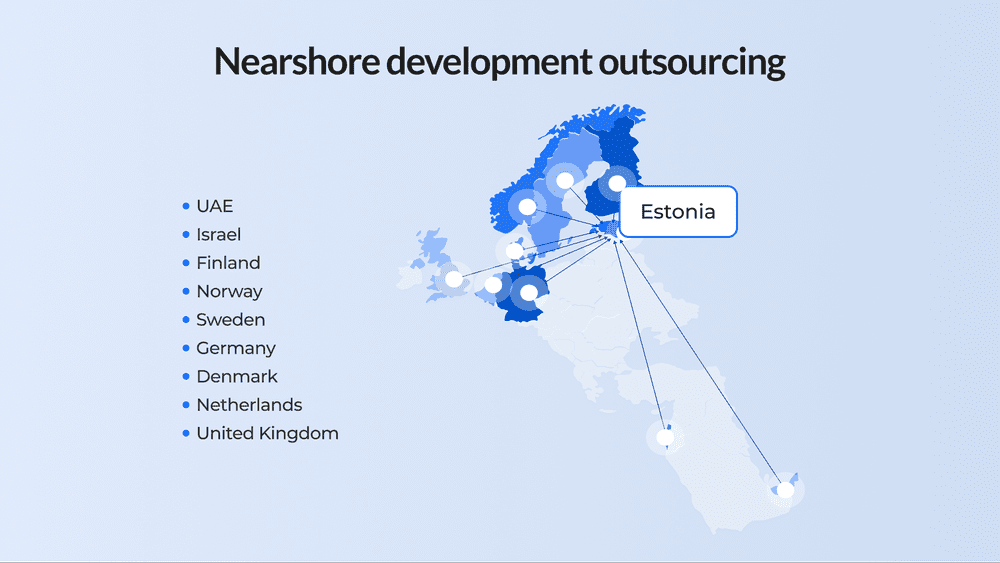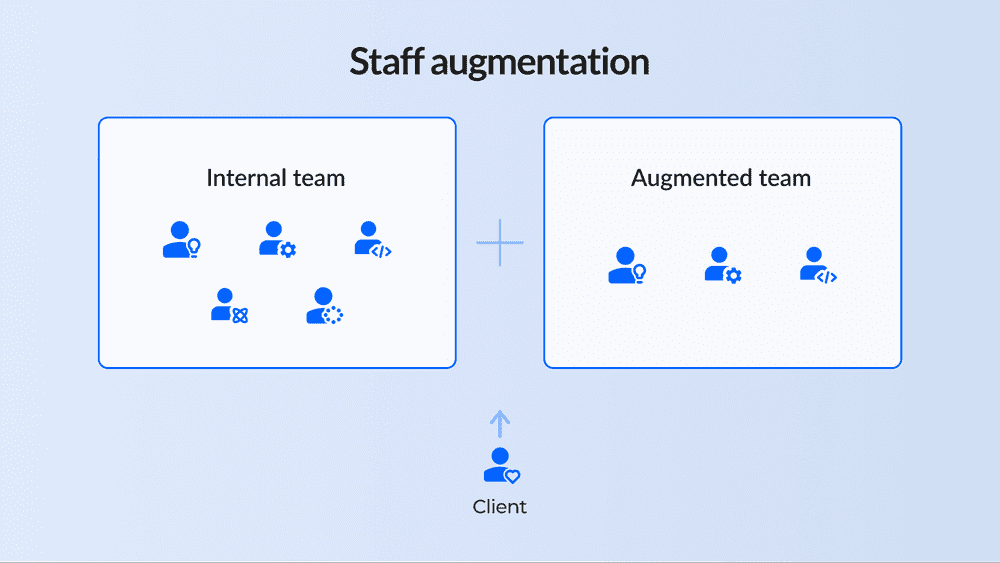Choosing Between Nearshoring and Offshoring: Which One is More Suitable for Your Business?
Today, one of the most popular types of development is outsourcing. It allows you to speed up development and reduce costs. IT outsourcing is divided into several types: location-based and relationship-based models.. Today we will consider them, and at the same time, we will discuss when and why you should choose a specific type of development!
Location-Based Types
Outsourcing involves working with individuals who are off the company’s premises. This is done when a large project needs more time to be completed with available resources. Experienced development teams can be brought in without physically working in the office or hiring new employees. The various types of remote cooperation with a development team differ depending on the distance and other specific elements. Let’s start by looking at location-based outsourcing options.
Onshore development
Onshore outsourcing involves partnering with vendors in geographically close regions. For instance, if your company is in Seattle and your IT vendor is in New York, the distance between your offices is significant. However, effective communication and workflow establishment should be fine.
When considering development expenses, it’s important to factor in regions like North America and Western Europe. Outsourcing development may be the optimal solution if a substantial investment is feasible.


Nearshore development
Partnering with development teams in Eastern Europe can come with a time difference of 1 to 4 hours, which may be a factor for Western European countries. Nevertheless, Eastern Europe is recognized as one of the most critical IT clusters worldwide, with a time difference of 2-3 hours. In the case of a Belgian company collaborating with Poland or Ukraine, the time difference should not be an issue, and Eastern Europe can offer lower development costs.
Offshore development
Offshore development is an outsourcing model where the development team is located in a different country, usually with a significant time difference from the client’s location. This type of outsourcing can offer substantial cost advantages, making it a popular choice for many companies. However, it’s essential to remember that there are potential drawbacks when working with a remote offshore team, including differences in time zones and language barriers that may impact communication and task performance.


To minimize these issues, it’s crucial to establish clear communication channels and use project management tools to ensure that everyone is on the same page. It’s also important to be aware of cultural differences that may arise when working with a remote team from a different country. These cultural differences may impact work styles, communication styles, and even attitudes toward work, so it’s essential to be sensitive to these differences and work to bridge any gaps.
With the specifics of geolocation out of the way, let’s now move on to working Relationships!
Relationship-Based IT Outsourcing Models
There are three different models for engaging new employees into projects that prioritize relationships over team location. Each model will be examined separately.
Staff augmentation model
Teams without sufficient experience in developing, for example, a banking app may benefit from hiring specialists with necessary skills and engaging them into their current team, rather than incurring the cost of hiring developers on staff.
The temporary employee outsourcing model allows for cooperation between in-house and permanent development teams, making it applicable to projects of varying sizes.


Dedicated team model
Staff augmentation involves the hiring of missing expertise to supplement the current development staff. An agreement is established with a team of experts, and typically, communication between them and your employees is not necessary.
The Dedicated team model is a strategy that involves recruiting skilled personnel to efficiently manage complex tasks and expedite project progress.


Project-based model
The third form of relationship outsourcing model entails hiring a third-party company for software development, either fully or partially. This approach is costlier and is recommended when in-house development is unfeasible due to restricted time or resources.
When deciding on outsourcing, it is important to acknowledge the possibility of reduced supervision and emphasize effective communication between the project manager and development team.
How to Choose Between Outsourcing Models
When making the decision, for instance, to outsource web development, it’s crucial to take into account the speed of completion. A project-based approach may be appropriate if your company already has an internal development team that needs the missing expertise.
Staff augmentation model
This form of outsourcing model is appropriate for situations when:
A development team is currently established and confirmed
The position of tech lead or CTO has been filled
Tech assistance is required from a specialist in a particular area
The staff augmentation model could be a practical choice for those who possess the necessary resources for application or software development and operation. It offers advantages such as decreased costs and improved management of the development process.
Dedicated team model
This development model is suitable for you if:
Your team already has a Project Manager
For a particular aspect of the project, it is necessary to have a team with ample experience
Effective decision-making is a crucial aspect of the development process
The dedicated team model could be considered as a viable option for businesses with in-house developers who require additional support during certain development phases.It is more expensive than staff augmentation.
Project-based model
The most recent development model is recommended for selection when:
There are financial limitations to consider regarding your budget
You have a startup and you are trying to bring it to life
Your development team is busy with another project
The project-based outsourcing model offers businesses of any size flexibility and scalability in terms of resources spent. It guarantees on-time project delivery while also managing budget constraints. The outsourced team focuses on specific tasks for a set period before disbanding once the project concludes.
Startups with limited resources might find this model useful for short-term projects. Clients with time-sensitive projects who need to be more involved may find it challenging. In-house teams can be less expensive than outsourcing a project. However, specialized skills and timely completion can outweigh the costs. But you should also keep in mind that when choosing a partner, not only working conditions matter, but also reputation!
We will separately mention the choice by geolocation, although we will not analyze each type in detail. We recommend carefully choosing between nearshore, onshore, and offshore, examining the transaction cost, the developer company’s portfolio, and the specifics of the states in which they are deployed.
When choosing a development specialist, it is essential to evaluate the appropriate model for your needs and the experience of your collaborator. Choose the vendor carefully, preferably assess the portfolio a potential partner offers and reviews it. Unfortunately, today neither fraud nor lack of due qualifications has disappeared anywhere. Therefore, it is recommended to Exercise caution and trust only qualified professionals.
Originally Published on https://www.breakfastleadership.com/
























